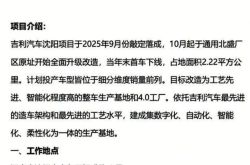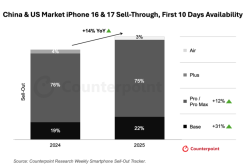Introducing GPT-4.5: OpenAI's Pinnacle Chat Model
![]() 03/07 2025
03/07 2025
![]() 618
618
Preface: OpenAI unveils GPT-4.5 as the culmination of its non-chain-of-thought models, heralding a shift towards reasoning models that demand prolonged contemplation.
This transition aligns with industry trends, where the release of DeepSeek R1 ignited a surge in reasoning enthusiasm, shifting the focus of AI competition from data volume to logical depth.
Author | Fang Wensan | Image Source | Network
OpenAI Officially Launches GPT-4.5
On February 27th, OpenAI officially launched GPT-4.5, its largest and most recent model to date, through a 13-minute video.
Mia Glaese, Vice President of Research at OpenAI, introduced GPT-4.5 as exceptional for its capability to engage in passionate, intuitive, and naturally flowing conversations, showcasing enhanced understanding of user needs.
GPT-4.5 distinguishes itself from o1 in its response to identical questions.
Notably, GPT-4.5 is not a reasoning model but rather OpenAI's largest and most knowledge-rich model to date.
The training process of GPT-4.5 consumed computational resources ten times greater than GPT-4o, and its performance improvements underscore the substantial benefits of scaling up pre-training.
In multiple benchmark tests, GPT-4.5 outperformed GPT-4o, notably with a 27% increase in mathematical ability and a 7% to 10% improvement in coding ability. In some specific metrics, GPT-4.5 even surpassed o3-mini.
GPT-4.5's core advancement lies in its enhanced unsupervised learning capabilities.
By augmenting computational resources and data scale, the model demonstrates higher accuracy in executing complex tasks, particularly achieving significant reductions in [hallucinations] (i.e., falsely generated information).
This makes GPT-4.5 more reliable in handling factual questions and broadens its applicability.
Early tests reveal that GPT-4.5 exhibits high emotional intelligence (EQ) in reducing hallucinations and improving accuracy, enabling it to tailor its responses based on the dialogue context. It demonstrates a profound level of empathy, particularly in managing interactions involving user emotions.
While its heightened EQ, aesthetic intuition, and creativity primarily stem from unsupervised learning, GPT-4.5 also showcases robust reasoning abilities.
GPT-4.5's significant upgrade is its profound understanding of human emotions.
Mia Glaese emphasized that GPT-4.5's responses are warmer and more natural, capable of modulating users' emotional states through language.
A Versatile and Naturally Intelligent Model
OpenAI explicitly states that GPT-4.5 does not engage in thought before responding, distinguishing it from reasoning models like o1.
Therefore, compared to o1 and o3-mini, GPT-4.5 is regarded as a more versatile and naturally intelligent model.
OpenAI firmly believes that reasoning will be the cornerstone of future models, with pre-training and reasoning complementing each other as scaling methods.
As models like GPT-4.5 become increasingly intelligent and knowledgeable through pre-training, they will form a robust foundation for reasoning and tool-using agents.
On datasets such as GPQA (science), AIME'24 (mathematics), and SWE-Bench Verified (coding), GPT-4.5 comprehensively surpasses GPT-4o but still lags slightly behind o3-mini in mathematical and real-world programming capabilities.
OpenAI has developed a suite of advanced scalable technologies enabling GPT-4.5 to leverage datasets from smaller models to train larger and more powerful ones.
The introduction of these technologies significantly enhances GPT-4.5's operability, sensitivity to details, and natural dialogue abilities.
Pricing Exceeds Mainstream Large Models
Currently, GPT-4.5 is exclusively available to ChatGPT Pro users, with a subscription fee of up to $200 per month and API usage costs of $75 per million tokens for input and $150 per million tokens for output, 30 times higher than GPT-4o.
OpenAI acknowledges that model training consumes substantial GPU resources, necessitating the urgent expansion of tens of thousands of graphics cards to meet demand.
Taking input data cache misses as an example, GPT-4.5's API cost is 30 times that of GPT-4o, 277 times that of DeepSeek-V3 (priced in USD), and 136 times that of DeepSeek-R1 (priced in USD).
For further comparison, even during DeepSeek's promotional periods, GPT-4.5's cost is 555 times higher.
GPT-4.5's API pricing is unexpectedly steep, not only surpassing its own mainstream large models but also being 25 times higher than the newly launched Claude-3.7-Sonnet, the world's first hybrid reasoning model, and vastly outpricing [price slayer] DeepSeek, which recently announced off-peak pricing.
GPT-4.5's computational efficiency has been improved by over ten times compared to GPT-4.
At the API level, ChatCompletions API, Assistants API, and Batch API will provide previews to all paid developers, supporting key functions such as function calls and visual functions for image input, suitable for applications like writing assistance.
However, due to the model's size and computational intensity, costs are high, and officials are evaluating the long-term feasibility of providing this service through APIs.
Competition with Kimi and DeepSeek
Currently, OpenAI's market value exceeds $157 billion (approximately RMB 1.1 trillion).
Recently, Altman publicly revealed that OpenAI is considering a usage-based pricing strategy.
Regarding the achievement of general artificial intelligence (AGI), he noted that an AI system can be deemed AGI when it can perform tasks that a skilled person can accomplish in critical work.
Notably, in the early hours of today, Kimi, a competitor, released the latest version of the Kimi-K1.6-IOI-high model, ranking first in the LiveCodeBench benchmark test, surpassing GPT and Claude series models.
Meanwhile, DeepSeek's open-source week activities continue to attract public attention, including the release of FlashMLA, an MLA decoding kernel designed for NVIDIA Hopper GPUs, the EP communication library DeepEP, and the FP8GEMM (General Matrix Multiplication) computation library DeepGEMM.
According to public information, OpenAI's sales revenue for the entire year of 2024 was approximately $3.7 billion, representing a year-on-year increase of over 1700%.
It is estimated that by 2025, OpenAI's annualized revenue will grow to $11.6 billion, with 75% of the revenue stemming from user subscriptions to the ChatGPT Plus service.
Internal estimates suggest that by 2029, OpenAI's revenue will reach $100 billion, equivalent to Nestlé's current annual sales.
GPT-4.5: An Era-Defining Release
OpenAI announced that GPT-4.5 will be the final version of its chatbot system devoid of [chain-of-thought reasoning] capabilities.
Following GPT-4.5, OpenAI's models are likely to mimic human thinking, spending more time contemplating issues before providing answers, rather than responding instantaneously.
GPT-4.5 represents OpenAI's swan song in the realm of [non-chain-of-thought] models.
Building on GPT-4.5, OpenAI plans to optimize its product line, prepare for the groundbreaking innovations of GPT-5, and lay the groundwork for adopting new methodologies.
Sam Altman pointed out that having an abundance of models can confuse users, and the future GPT-5 will be a significant milestone, integrating all of OpenAI's technological advancements.
One of the most significant innovations lies in its integration with the previously independent o-series models.
OpenAI stated that it will incorporate most of the technologies from the o3 model into GPT-5, effectively rendering the o3 model obsolete as an independent product.
In essence, GPT-5 will fuse the strengths of two concurrently developed [AI brains].
Industry insiders speculate that GPT-5 may serve as a [router model], coordinating various internal components or sub-models as needed.
Users will only need to interact with GPT-5, which will utilize diverse tools and knowledge resources to find the optimal solution, potentially involving accessing search engines, performing calculations, or utilizing code interpretation tools, depending on task requirements.
Conclusion: Navigating the Post-Acquisition Landscape
The release of GPT-4.5 is not merely a technical advancement but a pivotal milestone in the humanization of AI.
It redefines human-computer interaction through emotional intelligence, empowers practical application scenarios with a vast breadth of knowledge, and simultaneously sparks controversy due to its high cost.
With the advent of reasoning models, AI is poised to truly integrate into human life, becoming a [dual assistant] for both work and emotions.
For ordinary users, finding a balance between performance and cost will be the most pragmatic challenge ahead.
References: Ifeng Technology: "The Most Expensive AI Model Ever Goes Online, Emphasizing High EQ, and Altman Misses Conference Due to 'Babysitting'?", Website Knowledge: "OpenAI Releases GPT-4.5: High-EQ AI Sparks Widespread Online Discussion", JiQi ZhiXin: "OpenAI's Largest and Most Expensive Model to Date, with API Prices Soaring 30 Times, Prioritizing EQ Over Reasoning", DeepTech: "OpenAI Releases AI Model Claimed to Have the Highest EQ, Altman Claims GPUs Are Exhausted", Lei Technology: "277 Times the Price of DeepSeek! GPT-4.5 is Too Confident", TiMedia AGI: "The Strongest Model in 6 Years, GPT-4.5 Debuts: More Expensive, Higher EQ, Fewer Hallucinations"








